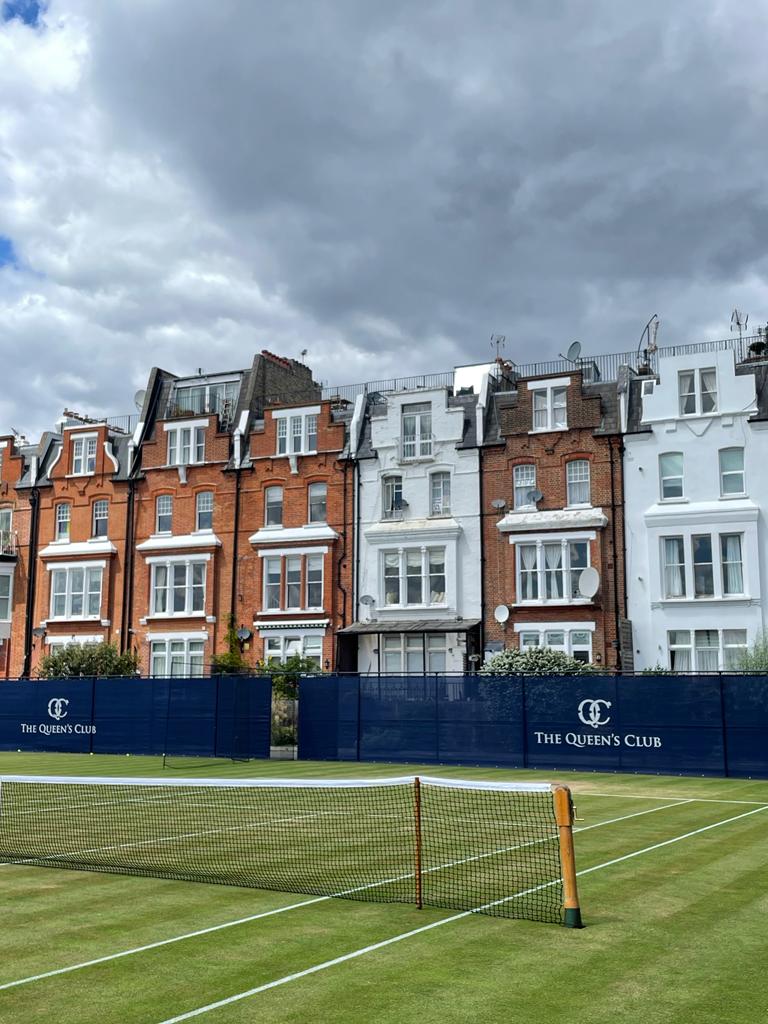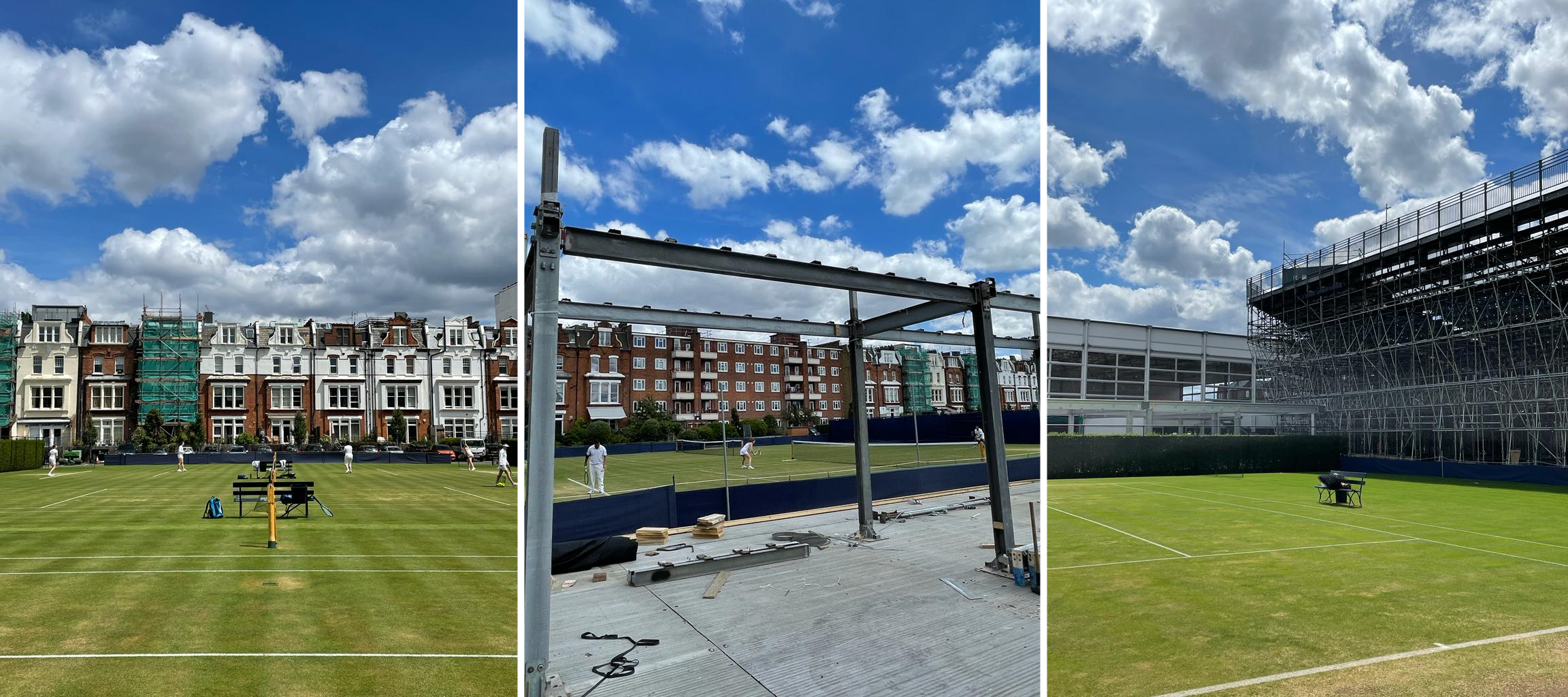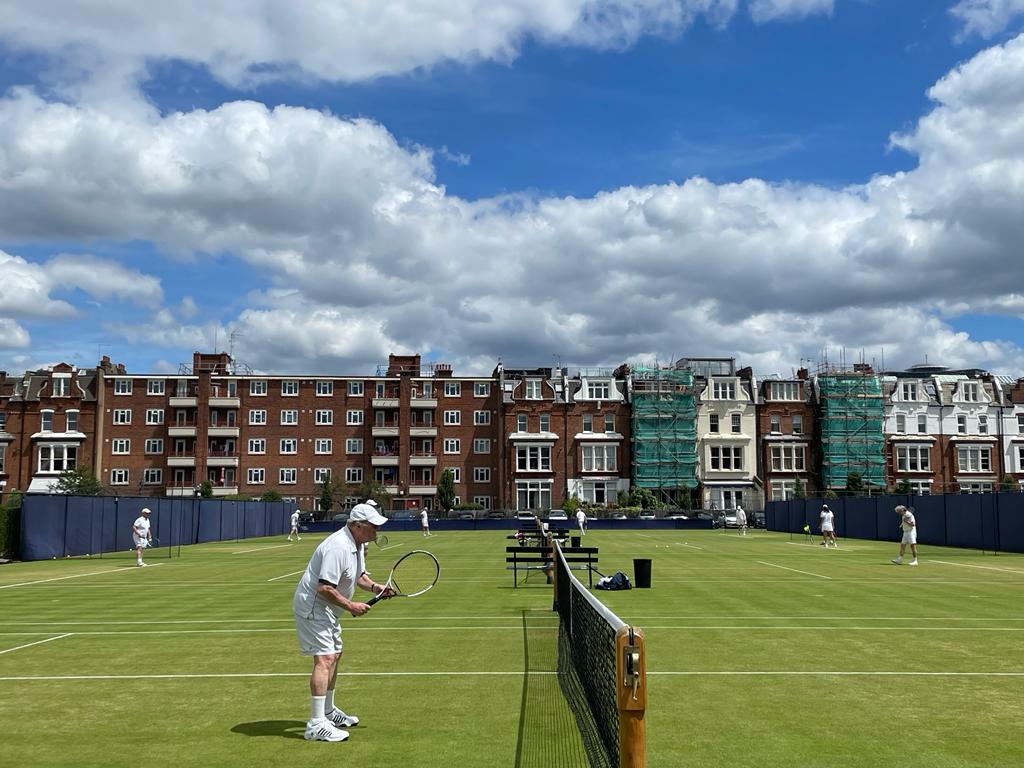The changing face of Queen’s Club through the eyes of a member
By April Tod

Entering Queen’s Club through the imposing wrought iron gates it’s hard to believe that on this site sits 40 acres of prime land surrounded by residential flats and houses in the middle of affluent West London. Once inside the club’s grounds, the expanse of grass courts are clearly visible as you stroll towards the red brick clubhouse with two artificial grass courts on your right and further two hard courts opposite the clubhouse adjacent to the revered entre Court which is rarely used by members and lies directly in front of the club’s famous Pavilion where members and guests leisurely eat and drinking al fresco during summer months.
It is these scenes that the hordes of tennis fans who flock to the club each day to watch the cinch Championships are missing. Instead what they see is a sleek well-constructed tournament venue which takes weeks to build and weeks to dismantle where members like myself slowly watch the gnawing disruption of our club’s facilities as soon as the build-up to the tournament begins in late April, and the few weeks after the tournament finishes. You could say members happily tolerate this by having the opportunity to watch first class tennis ‘free’! Naturally, not all members would agree with this statement!
The worst part of the whole saga is, in my opinion, seeing our lovely club become an ugly building site and also accompanied by constant noisy banging and hammering consistent with a building site. For those crucial weeks it’s almost impossible to sit quietly on the terrace and enjoy a morning coffee or read newspapers while a bevy of yellow clad workmen energetically build stands surrounding Centre Court – time is the essence – and everything has to be completed on time. This year due to three Bank holidays during the month of May, work was allowed to continue daily until seven in the evening.

By the middle of May, indoor facilities are taken away from us as every spare inch of the club is utilized for the tournament excluding the grass courts, they are only off limits once players start to arrive at the club to practice on grass the week before the start of the tournament. Even the club’s bar temporarily closes while the restaurant is taken over for corporate entertainment. However, this year the LTA, owners of the tournament, organised a charity tennis event on the Sunday before the start of the tournament which allowed members to watch ‘free’ but sadly after forty-five minutes it was interrupted by a heavy deluge of much needed rain much to the delight of Graham Kimpton, the club’s much praised head groundman.
It is during this build-up time that is the most difficult to endure for members wanting to use the club’s facilities. Many simply don’t bother to turn up during this period as piles of scaffolding, wooden boards and plastic seating are scattered everywhere and parking limited to only twenty spaces. But it’s this debris that eventually forms the backdrop of the tournament.
For those lucky to have tickets to the cinch Championships, few would have had the privilege of seeing the club as it is used by members. Instead, what immediately catches the eye when entering the club, is the imposing huge and iconic 9,000 seated stadium, and the many large smartly designed corporate entertainment facilities alongside shops and cafes all of which have been specially designed and built for the occasion, and all disappear once the finals are over.

To many untrained eyes, these constructions appear almost permanent, and quite sad that all the work and effort that goes into the tournament is eventually removed from the premises. To say the least, members are quite used to tolerating these weeks of disruption but it is difficult to comprehend just how much this affects our regular games of tennis and exercise classes as we all but forced to put up with the club transitioning from a private members club to an open public facility when thousands of tennis fans turn up to watch matches and mill around the club’s grounds.
As a member I have watched in awe how the tournament’s structure slowly grows from its embryonic chrysalis into a beautifully, well designed butterfly created by expert designers and architects and comparable to an artist’s painting taking shape.
The actual cost of building the tournament is unknown but these days the financial investment is a lot more than when for example, Rawlings sponsored the event in the 70’s which was followed by the Belgium beer company, Stella Artois who in those early days of sponsorship was an almost unknown brand. Wisely the company spent thousands of pounds upgrading the tournament facilities and was soon to become a household name in the UK.
No-sooner is the last ball been hit when workmen, already waiting in the wings, start dismantling the site that took the best part of six weeks to build and will take another three to four weeks to pull down before the club transforms itself back into its familiar quiet oasis of a private members club.
Most members quietly tolerate these disruptions but admittedly restoring the club back to normality is always something everyone looks forward to – at least for another nine months!
